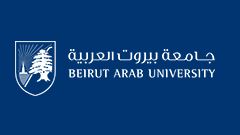Abstract
CITY summarizes the urban life’s history, for it is the truest reflection of people’s culture and ntions’ development. Squares have been affected by the grassroots, political and cultural mov- ments that the countries have witnessed; this fact emphasizes the realization of the various aspects relevant to the importance of the relation between the human as-pect and the activities carried out by the people in those urban spaces and the spatial aspect of the urban fabric and that that deterioration of the urban spaces, including the squares, came as a result of a host of reasons that in their es-sence give expression to the weakness in the human aspect of the historical city’s urban fabric. The research provides a study conducted on Martyrs’ Square (Sahat Al Shohadaa) as an accurate case study aiming at determining the effect of the rehabilitation process on this fabric in terms of form, size and intensity, over and above the style, the appearance and the touch. The research, in its findings and recommendations, stresses the necessity to con-sider the nature of interaction between both human aspect (human activities) and the spatial aspect (the urban spaces and public squares) as a crucial threshold towards the development and rehabilitation of ancient region, which enables them to merge with the urban fabric of the modern city, considering that these regions are in a holistic integration with the surrounding.
Disciplines
Architecture | Arts and Humanities | Education | Engineering
Recommended Citation
Ali Hassan, Bassam and Omar, Osama
(2015)
"دور الساحات والميادين في النهضة الثقافية للبنانSquares’and Plazes’ Role in the Cultural Renaissance of Lebanon,"
Architecture and Planning Journal (APJ): Vol. 23:
Iss.
1, Article 16.
DOI: https://doi.org/10.54729/2789-8547.1057
Included in
Architecture Commons, Arts and Humanities Commons, Education Commons, Engineering Commons

